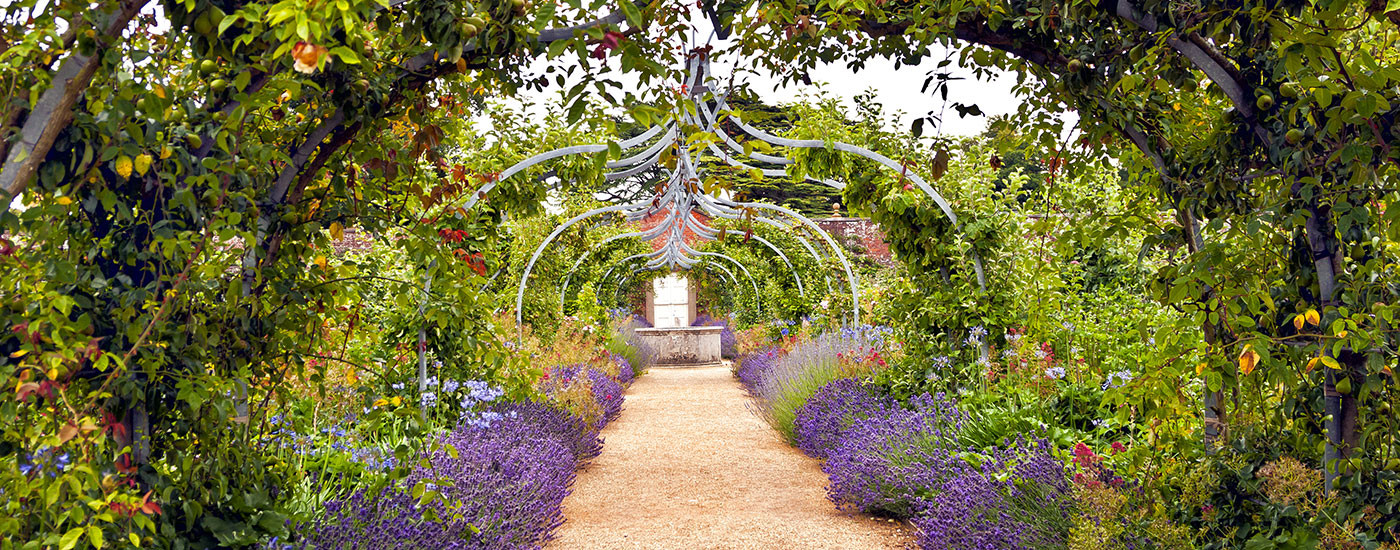Conduct a straw poll in any office or home around the country asking what an English garden is, and you are guaranteed to get a diverse selection of answers! From the landscape gardens of Capability Brown and the rose gardens of Vita Sackville-West to the cottage gardens of Gertrude Jekyll and the gravel gardens of Beth Chatto, everyone has their own idea of what constitutes an English garden, but most will agree that a common theme is one of romance.
We have looked at a mix of English gardens to identify some common characteristics that anyone can introduce into their own garden, whether you have a large space or a small plot.
Add an arch
Nothing speaks of romance and lazy summer days more than an arch, with scented, rambling roses climbing over it. Positioned at the end of a walkway, an arch forms a welcome typically seen in English garden design.
Create different areas
Dividing your garden into smaller areas allows you to create different pockets of interest. A seating area with an arbour for example will provide an area of tranquility and repose, whereas an area set aside for entertaining can have a completely different ambience. Trellis panels are a traditional way to demarcate different areas and they provide a quintessentially English support for climbers.
Install a picket fence
A characteristic of English garden design is the use of fencing to define the boundaries of the space. For smaller gardens, a picket fence and gate is evocative of an English country garden but if you are looking for total privacy and/or security, our timber fence department has a variety of styles for you to choose from. If the idea of a picket fence appeals to you but will not provide sufficient privacy, consider using picket fence panels instead of trellis when zoning the garden, with a gate to lead you from one area to another.
Kitchen gardens
When we think of some of the great English gardens, such as Hampton Court, Sissinghurst Castle, and Chatsworth House, we remember that all these great houses have a kitchen garden. Indeed, the English cottage garden was originally a small plot attached to a worker’s cottage that was used largely to produce food and nourishment for the cottager and his family. Introducing a greenhouse into the garden with a potting station, allows you to carry on the grow your own tradition. Where space is at a premium, our hardwood mini greenhouse offers the perfect solution.
Wooden elements in the garden
English gardens do not follow fashion trends, remaining timeless and classic, with anything too modern risking looking out of place. Timber garden furniture is the simplest way to introduce a natural, wood element to the garden to achieve an ageless quality. Timber benches and traditionally styled Adirondack chairs placed strategically in the garden, will entice visitors to spend time with the bees and the blossom.
Provide structure
Hard landscaping and structures will help to achieve the look when building an English garden, so add an obelisk to your borders. A pergola, also, is good for providing winter interest after the summer flush has faded.
An English garden design is easy to create and, even in the smallest space, elements can be introduced to achieve the look. Do not confuse an English garden with an English cottage garden however. The latter evolved from a need to supply food, progressing to a collection of flowering plants, shrubs and trees. A traditional English garden derives from the opposite spectrum economically, with elements of classical European gardens being incorporated into our English countryside.
Today, with some careful design choices, an English garden is achievable anywhere in the world!

